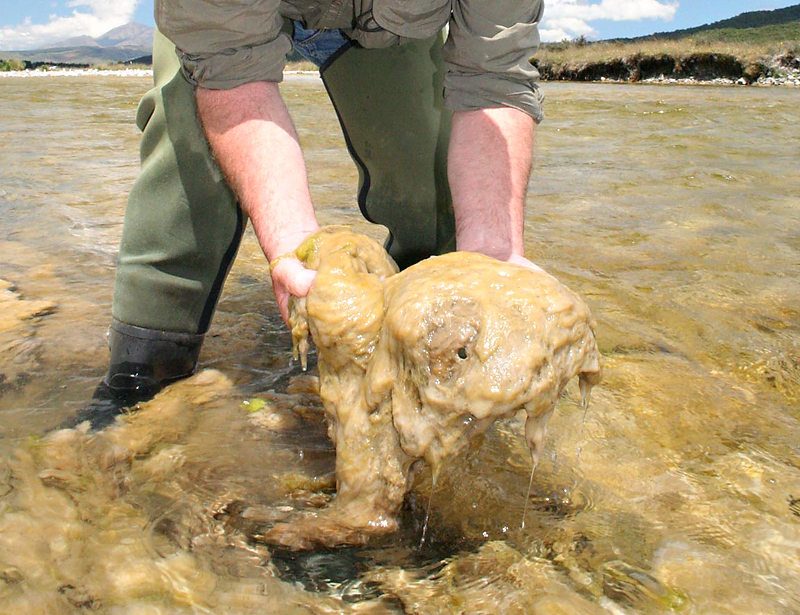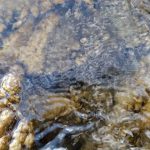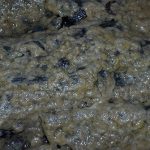Meet Didymosphenia geminata (didymo). Didymo has been spotted growing in the Gallatin River and its tributaries.
Didymo, or rock snot, is a single-celled alga that is native to Montana but has recently made headlines for causing river-choking mats. Blooms have been found in the Bitterroot and Kootenai rivers with hot spots below large dams. The discovery of didymo in New Zealand, where it is an invasive species, triggered a nationwide biosecurity response.
No single factor drives didymo blooms. Scientists are actively investigating the transformation of didymo from a rare species with infrequent blooms to a common species with widespread blooms.
Changing environmental conditions may be favoring the overgrowth of didymo. High nutrient concentration in stream water can increase the growth of many types of algae; however, low phosphorous levels appear to be a major driver of didymo outbreaks. Sunlight, shorter winters, low runoff, and warmer waters also contribute to didymo blooms.
Algae mats that cover stream bottoms have the potential to alter stream insect populations by replacing stoneflies, mayflies, and caddisflies with aquatic worms, midges, and water fleas. In addition, slippery algae carpets pose a hazard to swimmers and impact hydroelectric power generation and irrigation.
Algae cells can survive on gear for two months, or more, with very little moisture and light. Unwitting recreationists may transport didymo from one waterbody to another when their gear is not properly cleaned.
Felt-soled boots are a pervasive culprit because it is difficult to fully clean microscopic cells from felt. Recently, Yellowstone National Park banned felt-soled boots to prevent the spread of aquatic invasive species and pathogens.
Although Didymo is native to Montana, anglers have the responsibility to stop the spread of didymo outside of the state and thwart other invaders, including zebra and quagga mussels, before they enter Montana’s waters.
Recreationists have the power to prevent the spread of aquatic invaders by properly cleaning their gear.
Here are tips from Montana Fish, Wildlife, and Parks:
- Clean: Completely remove all mud, water, and vegetation before leaving the access area.
- Drain: All water from watercraft and equipment.
- Dry: Your watercraft and equipment. Aquatic invaders can only survive in water and wet areas.



